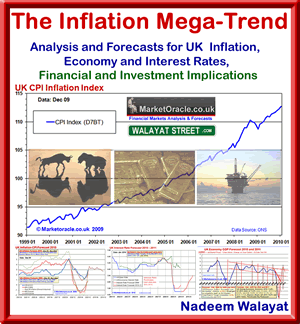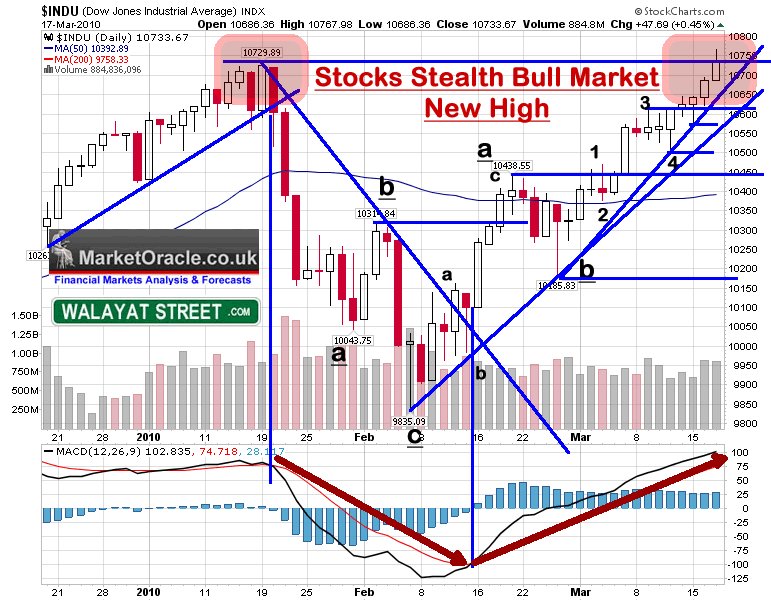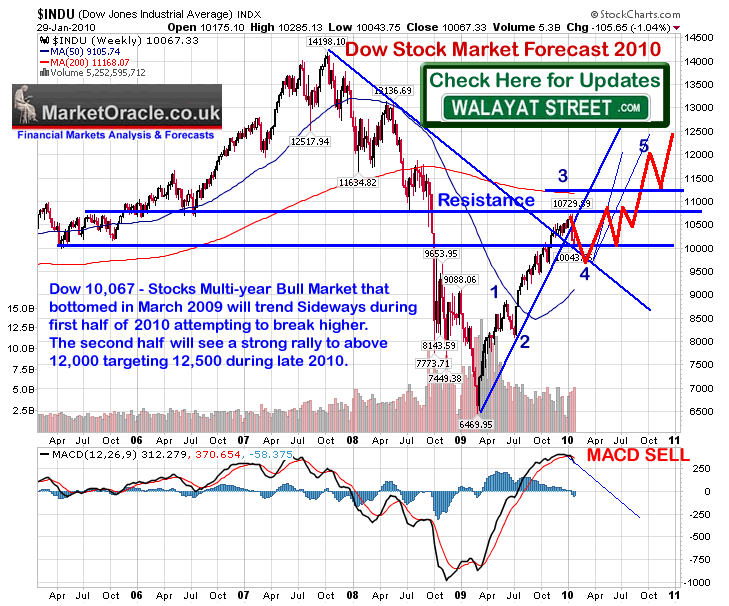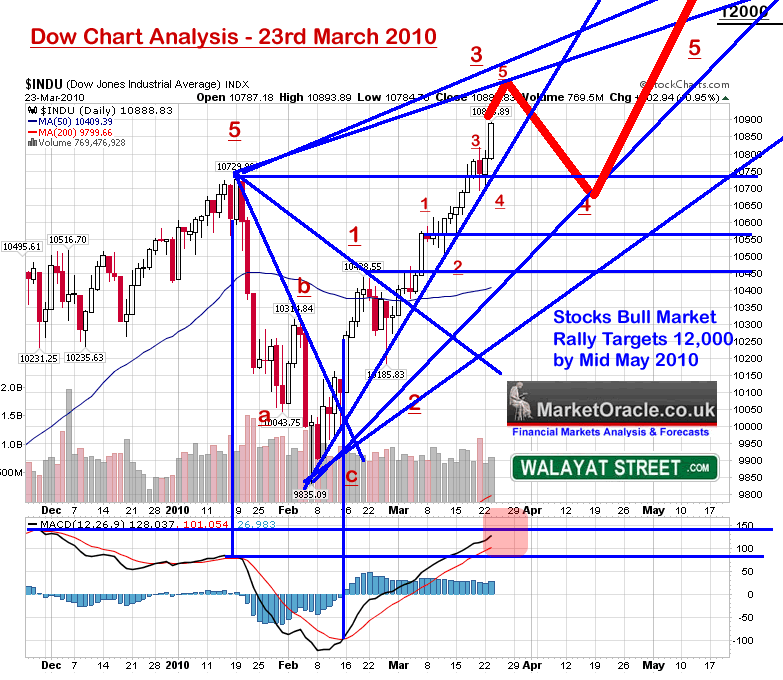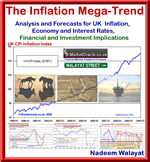- Interest Rates
- Economy
- Inflation
- Gold & Silver
- Emerging Markets
- Stock Markets
- Stock Market Sectors and Stocks, including ETF's
- Natural Gas
- Agricultural Commodities
- House Prices
- Currencies
- Crude Oil
Wednesday, 24 March 2010
UK Sub Prime Government and Its Sub Prime Thinking
Saturday, 4 April 2009
Petro-dollars Under Threat
BY MANRAAJ SINGH
Dear Reader,
There’s a major trend that could have a devastating impact on the US dollar.
What’s shocking is that I haven’t come across a single other financial analyst who has fully grasped the implications of it.
This is crazy, given that it will affect anyone who owns dollar-denominated investments, whether it’s gold, international shares or commodities. In fact, even if you aren’t directly invested in them, there is very good chance your pension fund is.
That’s how big this is.
The thing is, though, you can turn this trend to your advantage, as we’ll see in a moment.
I’m talking about the planned creation of a single common currency in the Gulf States. A new monetary union just like the eurozone, but for oil rich countries.
That might not sound like a big deal. After all, who really cares what a bunch of Arab countries are doing with their currencies?
But this is going to have a colossal impact on the world economy. Let me explain…
Last Friday, I explained why the dollar’s long-term value is under threat as the US economy falters. But now let me show you the threat to the dollar that the rest of the world still hasn’t picked-up on…
The great petrodollar merry-go-round is about to break down
You see, right now the dollar receives a huge amount of support from being the standard currency for international trade. The international oil trade is a big part of that. Oil is priced in dollars on the international market. It is bought and sold in dollars.
What that basically means is that countries that want to buy oil need to have dollars. Countries that sell it are left holding dollars. That fuels global demand for the American currency. It props up its value…
Right now, the only major producer that sells in a different currency is Iran. They take their payments in euros and Japanese yen. But it is the Gulf Arab states like Saudi, Kuwait and the UAE that are at the heart of the global oil trade.
But now think of a situation where global oil production is increasingly concentrated in the hands of the Gulf Arab countries. And, as I explained in a recent special report, that is what is going to happen as non-OPEC production collapses.
Now consider what the impact on the dollar is going to be when those countries say they don’t want to be paid in dollars anymore. Once they’ve got a common currency you can bet they are going to price their oil in it. They will want to be paid in Dirhams or Dinars or whatever else it is that they eventually name it.
That is going to short circuit global demand for the dollar. Because oil importing countries won’t need to buy dollars to pay for their oil anymore. The Gulf countries won’t be left holding huge reserves of dollars which they then have to recycle into the US…
Right now the oil-exporting countries are the second-biggest holders of US government debt after China. That’s because they get paid for their oil in US dollars. A lot of that money then gets reinvested in US dollar-denominated assets. But if they aren’t being paid in dollars anymore, they won’t have to recycle them by investing in US government bonds. International demand for the dollar is going to plunge. And the value of the dollar is going to plunge with it.
Two years to D-Day?
The Gulf Co-operation Council (GCC) states have been talking about this for a long time. And they signed the first concrete agreements to implement it last September. Since then they have been moving ahead with their plans. By the end of this year, they should have a monetary council in place. This will be a precursor to the Gulf central bank. And it will decide on the name and value of the currency.
They had planned to have their new currency in place by 2010. I doubt they will manage it that quickly though. The way I see it, the impact of the financial crisis will force them to push it back by about a year.
But there is absolutely no doubt about it – the Gulf common currency is now on its way. And when it happens it is going to kick the legs out from under the dollar.
As I said though, there are ways that you could profit from this. An obvious trade is to go short on the dollar. There are listed funds that allow you to do that. And again, not all dollar-denominated assets will lose out. Whilst the value of US shares, for example, is going to be eroded, the value of certain dollar-denominated commodities like oil and gold rises as the dollar weakens.
Kind regards,
Manraaj Singh
For The Right Side
Editor’s recommendation: Manraaj Singh is Chief Investment Strategist at Profit Hunter. As he explains, when the dollar falls, oil goes up. Click here to receive his latest smart way to play the “oil rebound”.
Wednesday, 28 January 2009
When will gold break through $1,000 an ounce?
The difference between gold and other precious metal
Thanks to Dominic Frisby, in London
Today, I wanted to look at precious metals in general. Not just gold, but silver, platinum, palladium and even some of the lesser known platinum group metals, such as rhodium and indium.
We are living through one of the greatest financial crises in history – possibly the greatest. The contraction in credit has forced selling in everything.
Many were under the illusion that precious metals would be safe in such a scenario. But they haven’t been. Let’s look at why...
Gold is maintaining its purchasing power, unlike money
The key thing to remember is that this is a financial crisis – a crisis of money. Of all the precious metals, gold is the only purely monetary metal. Yes, it has some industrial use, but a negligible amount. Gold’s use in jewellery has derived from its monetary function, which is to store wealth.
Money has two functions: one is to be a medium of exchange, the other to store wealth. Gold has long since been useless as the former (although technically sovereigns are still legal tender) but as the latter it has acted soundly. Yes, it fell against the yen last year, but so did everything. Yes, it was volatile against the dollar, but in the grand scheme of things, gold is maintaining its purchasing power, while money, be it the yen, the dollar or the euro is falling.
Some currencies have been weaker than the dollar. One ounce of gold now costs 110,000 Icelandic Krona for example, up from around 40,000 in 2007. To be honest, I’m surprised it isn’t higher. (Thanks to Nick Laird at www.sharelynx.com for the charts.)
Britain has similar, though currently less extreme, problems to Iceland. This has been reflected in the price of the pound against gold.
So gold, although volatile, has performed well.
Silver is more vulnerable than gold
Silver, too, is a monetary metal. As many of you will know, the words ‘silver’ and ‘money’ are interchangeable in some ninety or more languages: ‘argent’ in French, for example; ‘plata’ in Spanish. ‘Pound sterling’ once meant a pound of sterling silver. But, historically, silver’s role as money was less as a store of wealth and more as a day-to-day medium of exchange. That role has now expired.
Many silver bugs will point to silver’s numerous and ever-increasing industrial uses. But the demand for these uses has decreased as the crisis has unfolded. The outlook for business is grim, and the market has reflected this in the price of silver. In other words, silver’s industrial use, the very thing that made it desirable, suddenly made it undesirable.
In short, silver outperforms gold during an inflationary boom, but underperforms during a deflationary bust. This is reflected in the gold-silver ratio, which spiked dramatically in the Autumn.
Many were calling for that ratio to fall below 20. It will one day. The historical ratio is 15 – there is 15 times as much silver in the earth’s crust as gold. But we are a long way from that. We may see 100 first.
But those who bought silver with pounds will not be as disappointed as dollar buyers. It’s not too far off recent highs:
The story isn't great for platinum or palladium either
I’m afraid it is the same story for platinum and palladium as with silver. Only a year or so ago, many - myself included – looked at South Africa’s political problems and its energy crisis and asked where in the world platinum was going to come from. Indeed we are still asking ourselves that.
But the market doesn’t care. Though precious, platinum is still an industrial metal. The car industry is, for now, doomed and the market has no time for platinum, despite its rarity.
It was the same story for palladium, which fell from $600 to about $175 per ounce, and for rhodium it was even worse. The rhodium chart was amazing. It seemed to do nothing else but go up. For years this was the case – then crash.
Yes, silver and platinum group metals have a use in jewellery, but jewellery sales are down, despite its use as a store of wealth. Even gold jewellery sales are down. All the demand for gold is safe-haven investment demand.
By November of course, the industrial precious metals had become way too cheap. The market recognized this and platinum and silver have since rallied. And I suspect they will continue to rally along with all commodities for the next month or three.
But the greater demand is for money, so over the longer term – the next three years or so - we can expect the demand for the monetary metal gold to be greater than the demand for the industrial.
When will gold break through $1,000 an ounce?
However, those short-term traders who play gold in dollars should perhaps exercise some caution here. It has had a good run since November and could easily bounce back off the trendline below. In fact, the ideal technical scenario is to gently pull back and then cruise through at the next attempt.
Those who read a lot of my stuff will know my theory – and it is no more than that – that gold makes 6 to 9 month up-moves, followed by periods of consolidation lasting about 18 months. I suspect we are in one such period. I do not see a break out to new highs above $1,000 in the very near future, but we'll be there by this time next year.
So I am holding onto every ounce of gold and every quality share that I own. Gold’s uber move could strike at any time and I don’t want to miss it when it comes. Like the stock market crash of last autumn, it has been years in the making, it will be swift in the unfolding and you have to be positioned.
If you’re not in it, you will not win it.
Turning to the wider markets...
The FTSE 100 fell another 0.4% yesterday, closing at 4,194. Mining stocks and utilities were among the bigger fallers: Xstrata lost 4.9%, Anglo American 1.3% and Antofagasta 0.8%. Severn Trent Water was down 3.5%, and Scottish & Southern Energy lost 0.7%.
In Europe, the Paris CAC 40 lost just one point to end at 2,954; the German Xetra Dax, meanwhile, was down three points at 4,323.
In the US, financial stocks led the Dow Jones Industrial Average up 0.7% to 8,174. Bank of America climbed 8.3%, while Citigroup added 6.6%. The broader S&P 500 index closed up 1.1% at 845, and the Nasdaq Composite finished 1% higher at 1,504.
Overnight in Japan, the Nikkei 225 rose 0.6% to 8,106, sustained by hopes of a US 'bad bank' rescue plan. The broader Topix index, however, fell 0.1% to 804.
Brent spot was trading at $43.63 early today, and in New York, crude oil was at $42.39. Spot gold was trading at $898 an ounce, silver was at $12.13, and platinum was at $948.
In the forex markets this morning, sterling was trading against the US dollar at 1.4283 and against the euro at 1.0743. The dollar was trading at 0.7526 against the euro and 89.08 against the Japanese yen.
And there was mixed news for Britain's economy today. In a rare ray of sunshine, satellite TV operator BskyB announced it will create 1,000 jobs in its customer service and equipment installation teams, as it expects strong demand for its high definition services. Sales were up 5.8% in the six months to December 2008. But there was bad news for the commercial property market, as a report issued by Moody's concluded prices in the UK could fall by as much as 25% this year.
Wednesday, 7 January 2009
The Gold Bull Run
 What was the best-performing asset of 2008?
What was the best-performing asset of 2008?Thanks to Dominic Frisby of Money Week
The Japanese yen. The many funds that had borrowed money in yen to buy assets in other currencies, now sold those assets and bought back yen to pay down debt. This was the unwinding of the Great Yen Carry Trade.
Hard to believe though it is with all the huge volatility, the next best performer was gold, up about 6% on the year against the dollar, and a lot more against everything else from stocks to real estate.
Gold was down some 15% against the yen. But those who bought their gold with British pounds will be delighted. After a hedge-fund beating 30% gain in 2007, we saw a stupendous 44% rise in 2008. Gold broke out above £600 to all-time highs.
However, it was an extremely volatile year and many of those attempting to trade gold with margin, in other words on borrowed money, will have been wiped out. It’s why I am forever saying that you should buy the physical metal itself...
The outlook for sterling is grim - gold is your insurance
Even silver, which had a pretty woeful year by all accounts and was down some 24% against the US dollar, made 13% against the pound. (That most frustrating of metals continues to frustrate). As we all know the outlook for sterling is grim. I do not rule out a full-scale currency collapse. But, for now, it appears to be making some kind of a bottom against the US dollar.
If you look at how gold has traded vs sterling since Gordon Brown sold our gold, you will notice a distinct staircase pattern. It shoots up, then consolidates at the higher level, then shoots up.
Based on this repeating pattern, since we have just had a sharp shot up – and this could continue for a short while longer - a period of consolidation is now likely, before the inevitable march to £1,000 an ounce and beyond. But I would not sell a flake of your physical gold yet. It is your insurance - if sterling implodes, you’ll need it.
When measured in gold, this is already the worst house price crash in history
I don’t know if this sell-off in sterling has been orchestrated, but it suits the government. The economic downfall doesn’t look nearly so bad measured in weakened sterling as it does in, say, dollars. House prices are down some 15-20% from the highs, depending whose figures you use, measured in sterling. But measured in gold, this is already the worst crash in history, as the chart below shows.
What’s more this crash still has a lot further to go.
In this chart, having risen by the most, London prices look set to fall by the most:
(My thanks to mathematician Tom Fischer of Heriot-Watt University for these superb charts, which he kindly offers free of charge. You can see more of his work here.)
There are many people out there, myself included, who sold property and bought gold. They were considered cranks and crackpots by their nearest and dearest. Those nearest and dearest are now revising their opinions. The long-term trade of property to gold and back to property when certain targets are reached (100 ounces of gold for the average UK home, maybe?) is still very much alive and well.
Gold is on track to be a top performer this year
In late November I wrote that I felt gold stocks were set to be the best performing asset class over the next two years (to read this article, click here: 2009: gold stocks will be among the top performers). We are already on track with the HUI (the index of major gold producers) up about 50% since then. Now that tax-selling is done in North America – it ended at Christmas – some significant buying has come into gold stocks of all kinds, from explorers to majors, and we are seeing some impressive action everywhere. Hold your positions.
Over Christmas, I had a long conversation with my step-father about gold. He’s South African, so perhaps has a greater familiarity with gold than many of us Brits. In the 1970s, you weren’t allowed to take your money out of South Africa. (Who knows what currency controls are headed our way as governments – Brown’s in particular –move to tighten international banking regulation).
The rand was falling fast and nationals saw their purchasing power collapse. Many of those who fled, he told me, got their wealth out of the country by carrying out Krugerrands. His parents were Jewish and fled Poland in the 1930s. They too transported their wealth through a similar means. And yet he doesn’t like gold, because, he says, it doesn’t pay any interest. I reminded him how much interest you get on dollars and on yen. From tomorrow, as the Bank of England cuts interest rates further, it looks like you’ll get a similar amount on pounds. Paper currency paying as much interest as gold, who’d’ve thought it?
The gold bull market of the 1970s ended when Volcker raised interest rates to 20%. 20% interest rates are a long, long way off this time around – and so is the end of gold’s great bull market.
Wednesday, 3 December 2008
The police, and the state, are out of control
Published: December 1 2008 19:21
The police are out of control. So is the government. We can only conjecture as to what possessed the senior officers who raided the homes and parliamentary office of Damian Green, the Conservative immigration spokesman. Yet their disdain for political process spoke eloquently to the authoritarian culture of our times.
In this respect, regardless of whether ministers played a direct role in Mr Green’s arrest, the blame rests squarely with the government. The police must be held to account for their heavy-handed intimidation, but ministers nurtured the climate in which such madness flourishes.
The absurdities of the incident are self-evident. A score of officers from the Metropolitan police’s “special operations directorate” barged into Mr Green’s London and constituency homes, hauled him off to the cells and stripped his office of computers and files. The alleged offence? To have put into the public domain leaked information that embarrassed Jacqui Smith, the home secretary.
There is not a hint here of any breach of national security. Mr Green exposed the incompetence that has long described the conduct of affairs at the home office. The official alleged to have leaked the information has already been arrested.
It is all but impossible to imagine a jury convicting Mr Green. Disseminating leaked information has been embedded in the custom of politics since time immemorial. Rightly so, given the stiflingly secretive British state. When he was in opposition, Gordon Brown used to boast of his skilful exploitation of such material. Can we expect the “special operations directorate” to be hammering next on the door of Number 10 to seize Mr Brown’s BlackBerry?
Mr Green was arrested under a part of the common law that proscribes “misconduct in a public office”. The police say (off the record, of course) that the MP was not a passive recipient of documents, but conspired with the official. They hint they have evidence enough to charge Mr Green.
We shall see. The purpose of this 18th-century law is to deal with corrupt public officials including, dare one say it, police officers. To deploy it in this fashion against elected members of parliament is to show, at very best, blithe ignorance of the democratic process. MPs are not above the law, but the police have no place in politics.
We have been here before. During the final year of Tony Blair’s premiership, a team of officers conducted a long, expensive and fruitless inquiry into allegations that the then prime minister had sold peerages in return for party donations. Once again the staged drama – dawn raids and off-the-record smearing of those under investigation – was in inverse proportion to the possibility of any prosecution.
Needless to say, no one was ever brought before a court. But it seems the police are still ready to trample over the line that separates legitimate investigation from the, albeit sometimes grubby, practice of politics.
You could say, though, that Mr Blair should not have been surprised. If the police think they can discard due process, they have been taking their cue from the government.
For more than a decade, first Mr Blair, and latterly Mr Brown, have rolled forward the boundaries of the state at the expense of civil liberties. The consistent opposition of the Liberal Democrats and, latterly, even of the Conservatives to this insouciant disregard for ancient freedoms has been brushed aside as the hand-wringing of feeble liberals.
Some measures have been explicable and justifiable in the face of the threat from violent Islamist extremists. The first duty of any government is to guard the security of its citizens. I have more sympathy than many with the view that the intelligence agencies and the police must be given sufficient means to thwart the terrorists.
But the powers of the state have advanced well beyond that. The present government sees no distinction between the rule of law and whatever piece of legislation it can force through parliament.
In the criminal justice system, the fragile balance between the rights of police, prosecutors and accused has been overturned. The presumption of innocence is scorned. Successive home secretaries, including Ms Smith, have mouthed the mantra that the police are always right.
Ministers have likewise greatly extended the state’s surveillance of law-abiding citizens. The pretence that it is all about al-Qaeda has been exploded by widespread use of anti-terrorism laws by local authorities and other public bodies. Parents suspected of “gaming” school admission systems have become the victims of elaborate surveillance operations by local councils. Almost anyone and everyone in public authority can now call up private telephone and e-mail records. We must suppose they will have equal access to the government’s Orwellian National Identity Register.
Little wonder the police seem to think they can abuse their power. The senior ranks of the Metropolitan police are overdue a serious clear-out. No one should be in any doubt, though, that the real culprit is the government.
More columns at www.ft.com/philipstephens
philip.stephens@ft.com
